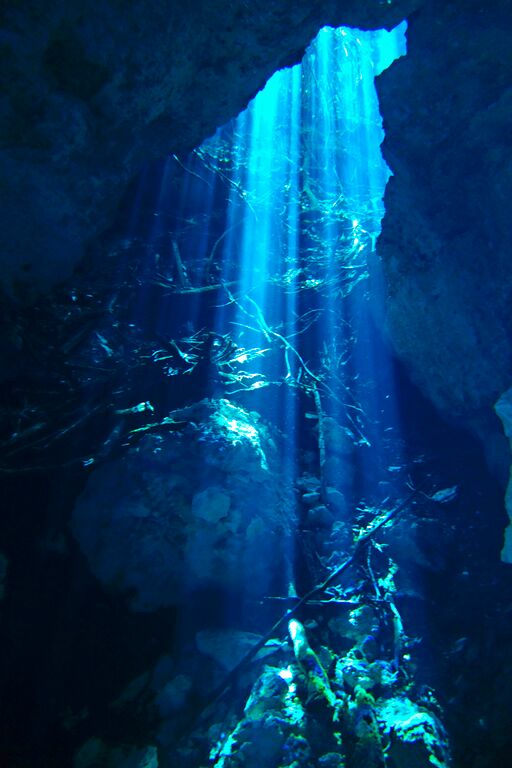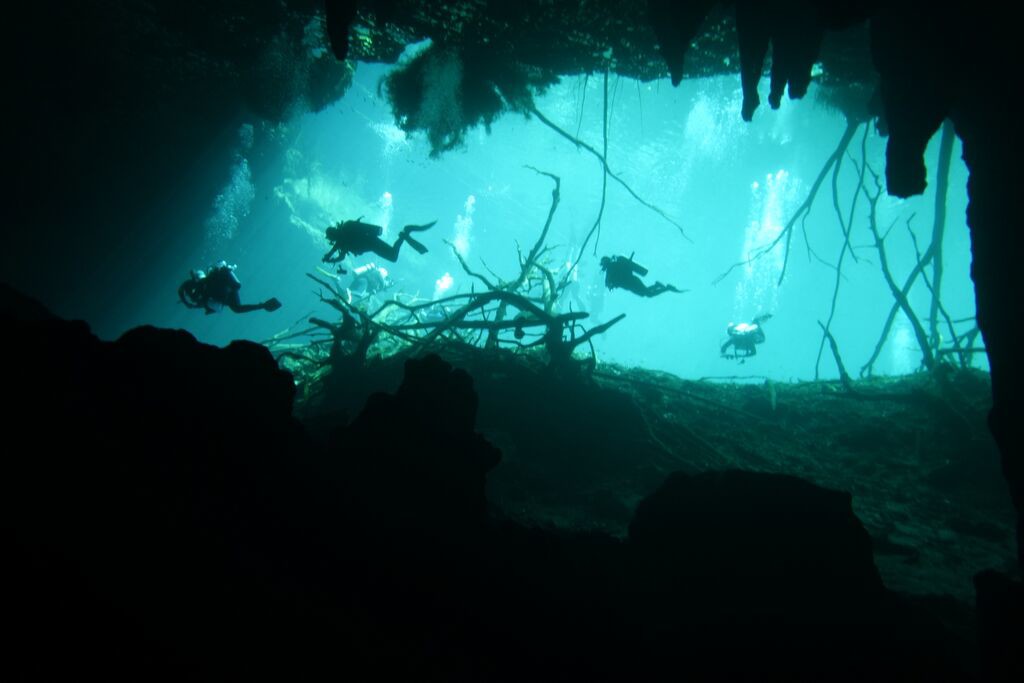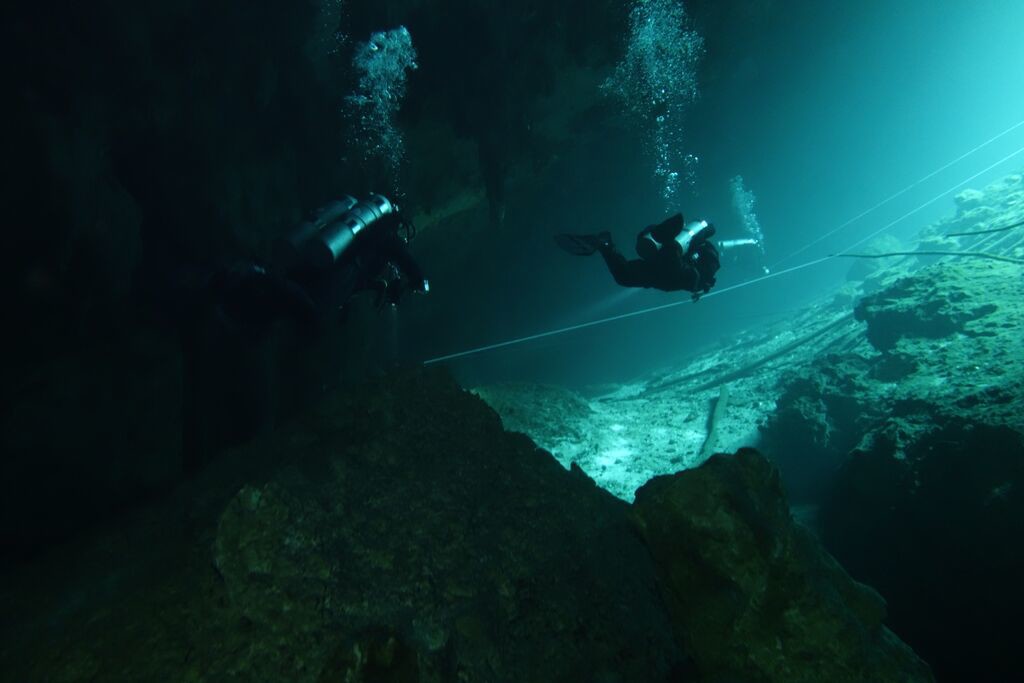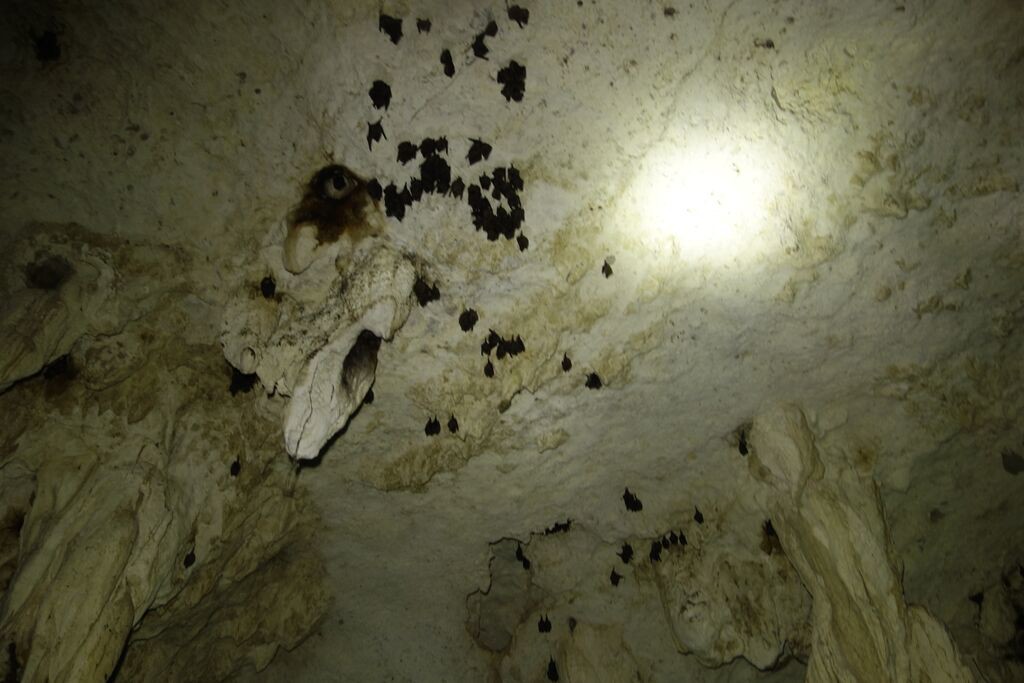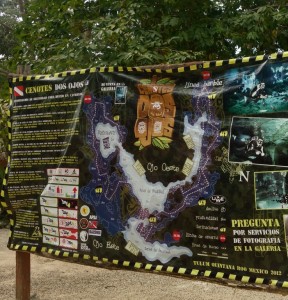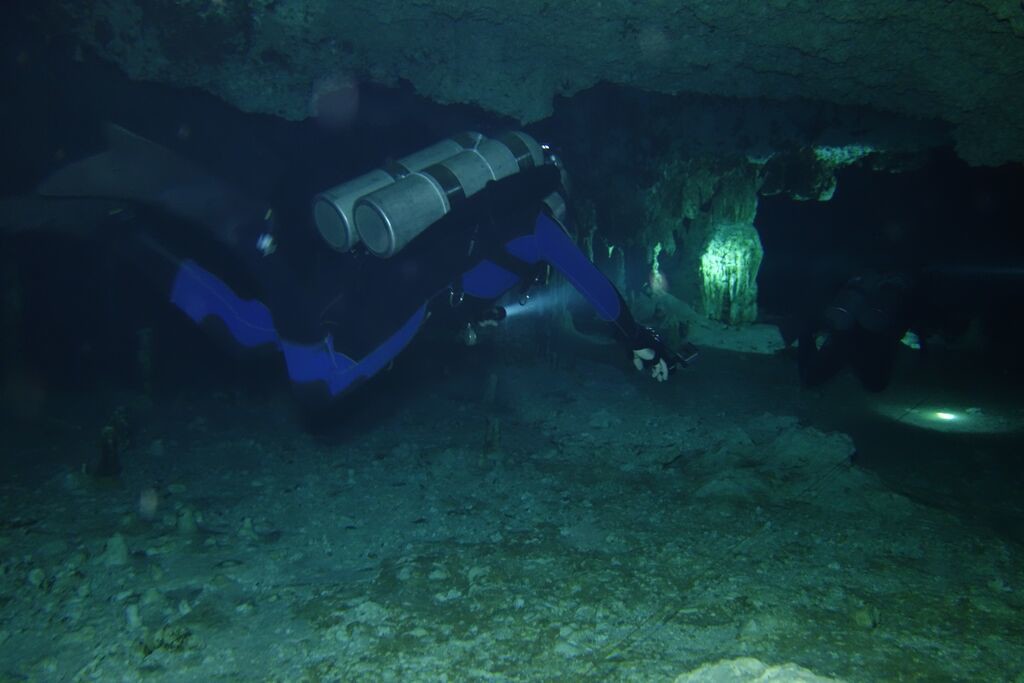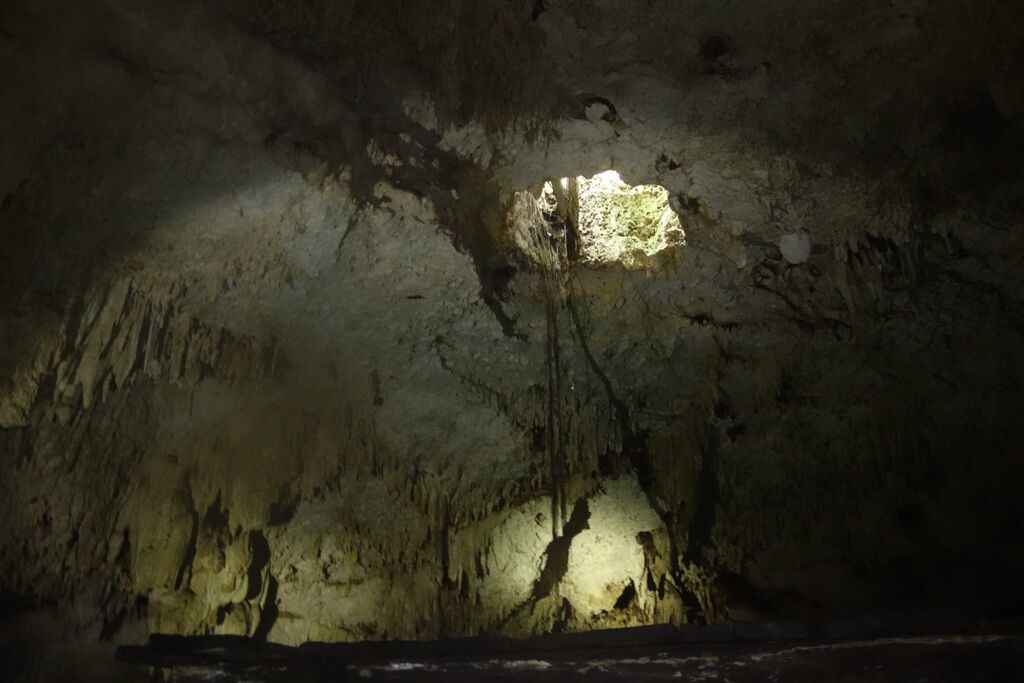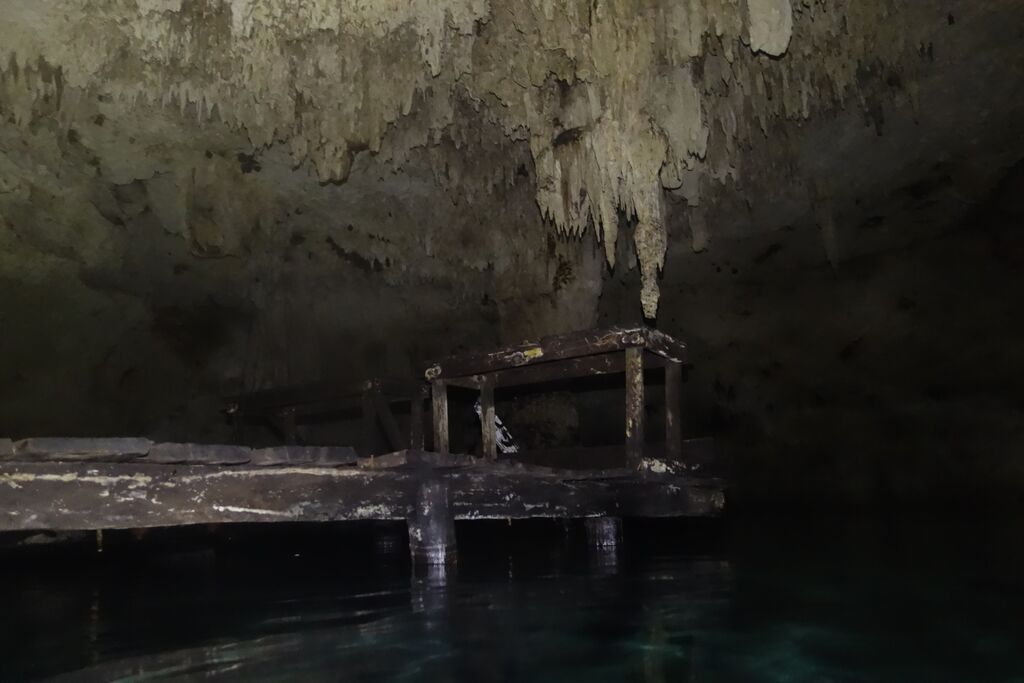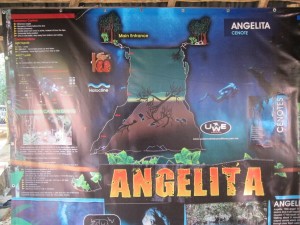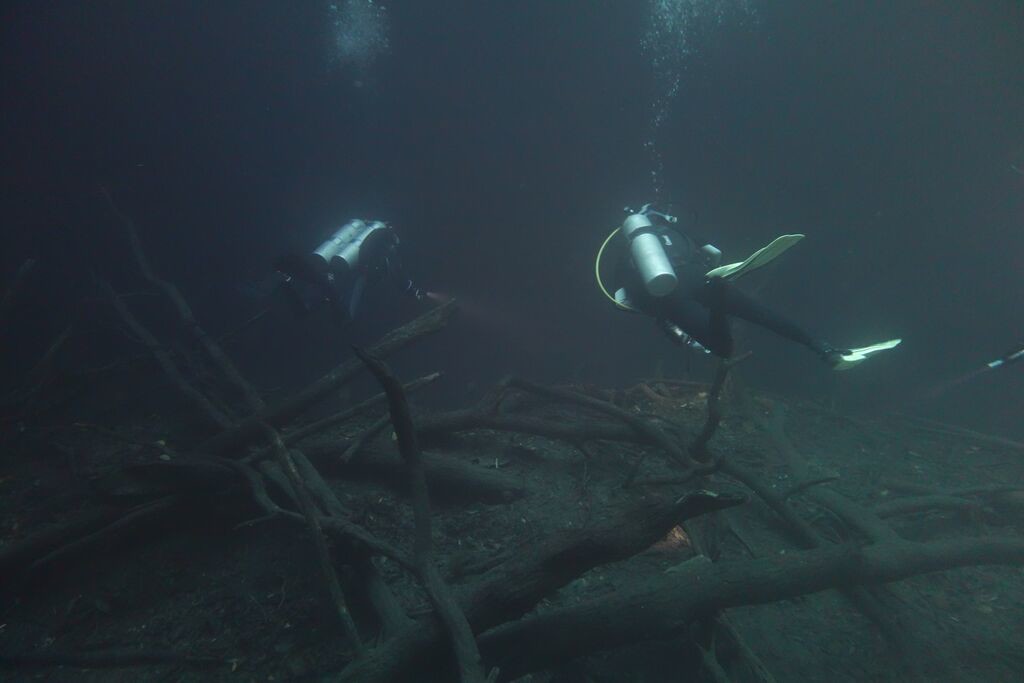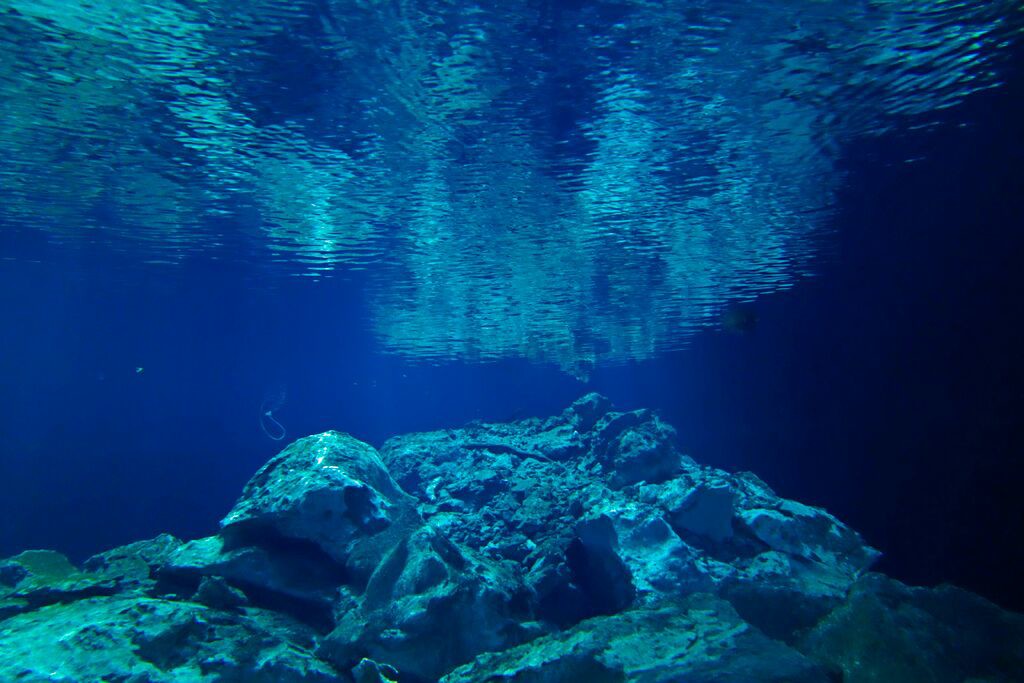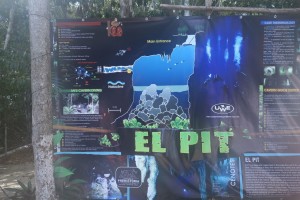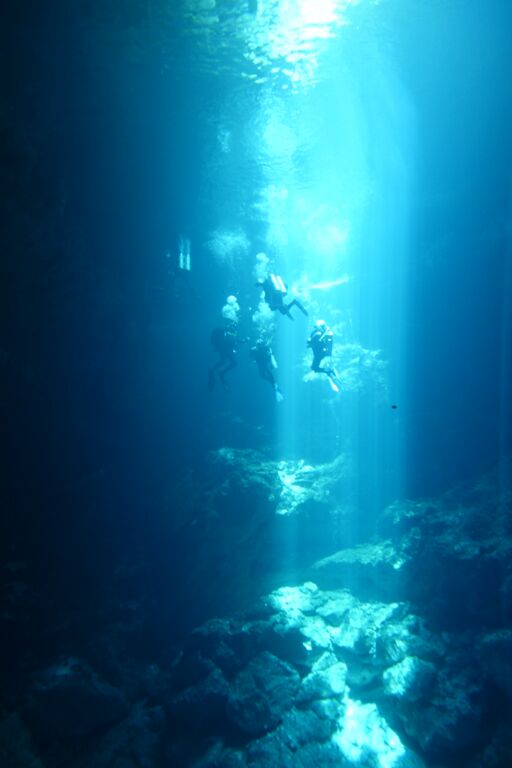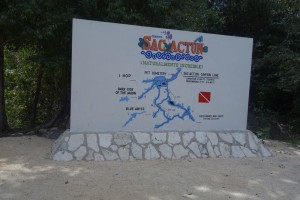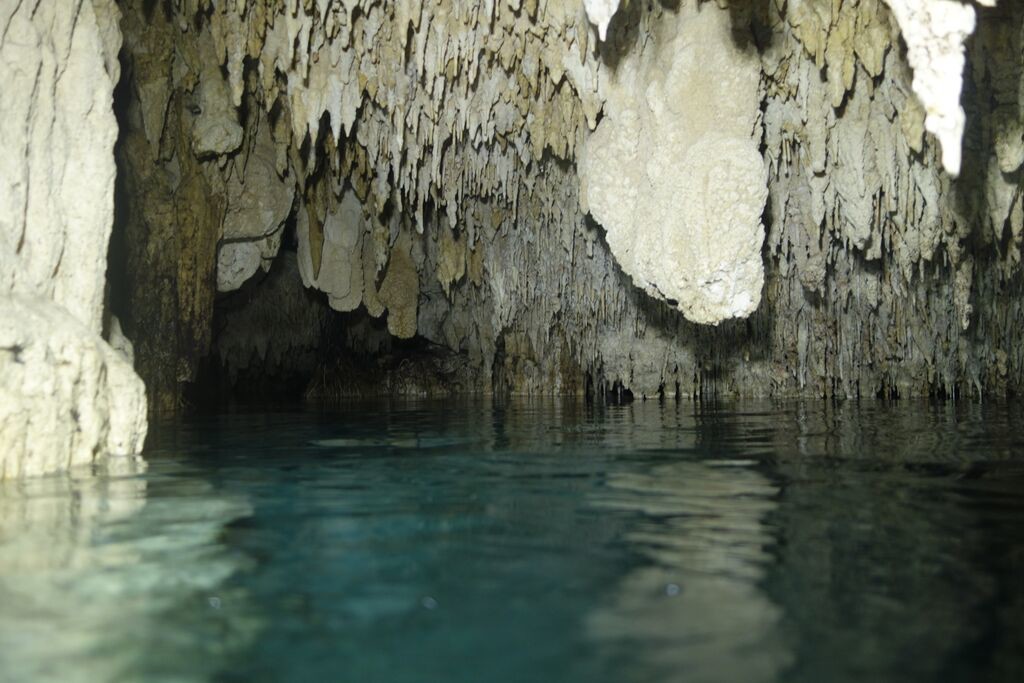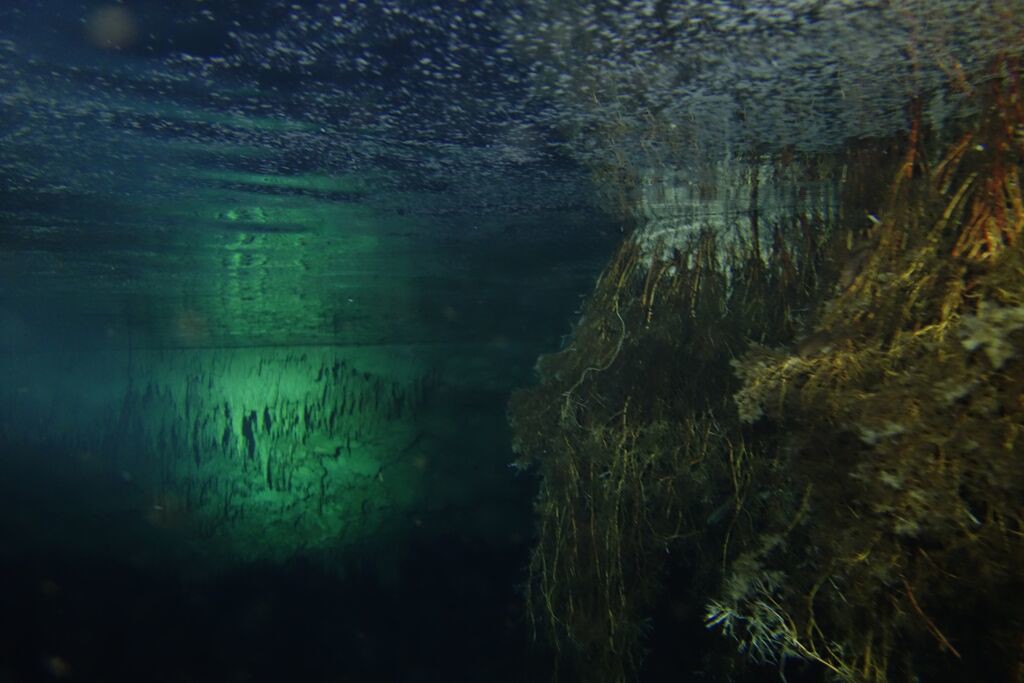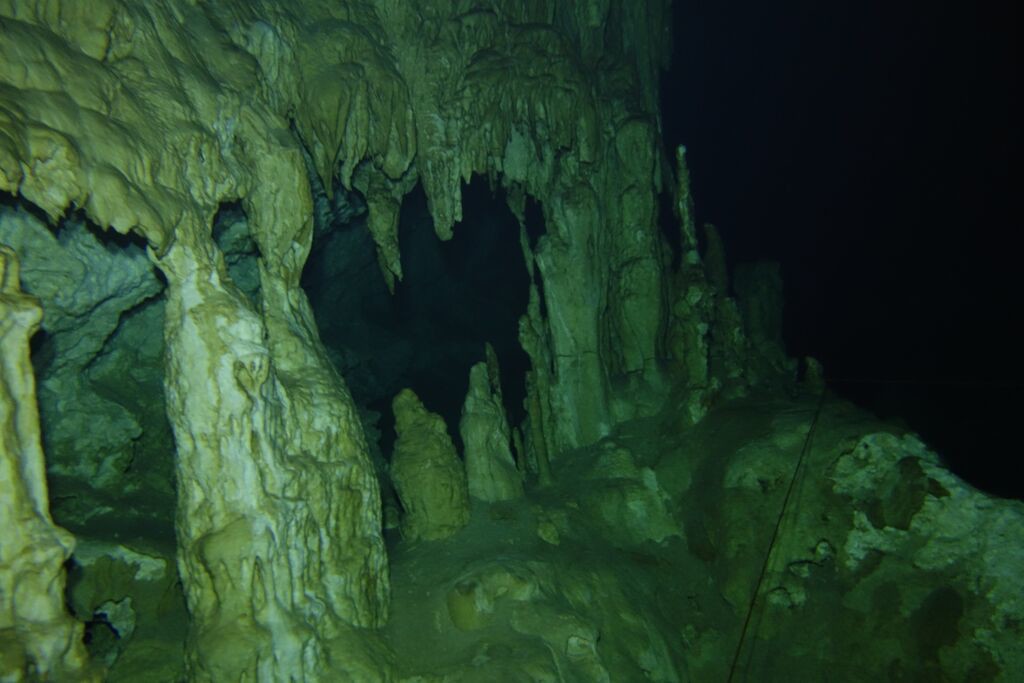News
Mayan Magic: Cavern Diving in Mexico’s Yucatan Peninsula
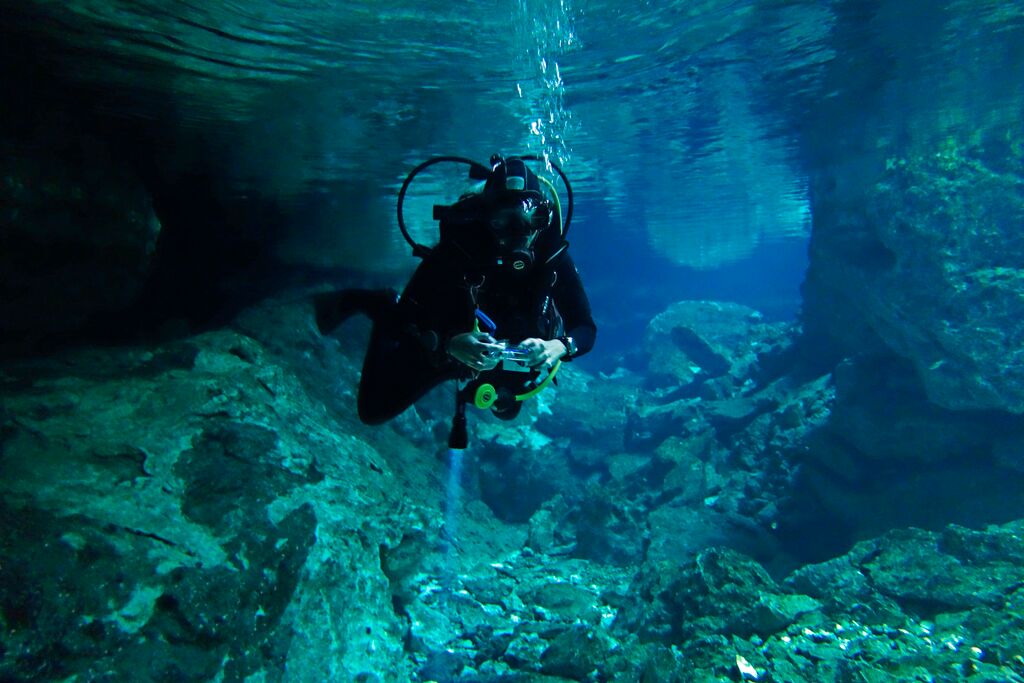
Southern Mexico’s Yucatan peninsula is the ancestral home of the Maya people whose ancient cities and monolithic temples can be found everywhere from Cancun in the North to Honduras 800 miles to the South.
The region consists of a gigantic limestone cap riddled with hundreds of subterranean rivers which over the millennia have carved out beautiful caves and passages on their way to the sea.
Over time some cave roofs have collapsed revealing open bodies of water called Cenotes which the Maya believed were gateways to the underworld and the home of their Gods.
Today they allow adventurous divers access to a magical flooded world where they can marvel at intricate limestone formations and dazzling light shows.
In February 2015 a group of fourteen current and former members of Southsea SAC (BSAC 009) set off to discover what makes the caverns of the Yucatan such a special place to dive.
As we were all experienced divers, our aim was to enjoy a “Rolls –Royce” tour of the area’s subterranean dive sites under the expert guidance of professional cave guides Lanny and Claire Vogel of Underworld Tulum, packing in as much diversity, quality and adventure as possible.
Day 1: Car Wash & Gran Cenote
Feeling our way
Having been met by Lanny and Budgie (yes, the same Budgie who skippered Top Gun out of Portland back in the day) we drove to Underworld Tulum’s base to be briefed on cavern diving protocols, divided into teams and acquainted with our cavern diving kit.
I was part of “Team Claire” led by cave diving expert Claire Vogel.
Our first Cenote dive would be at “The Car Wash”, so called because local taxi drivers used to wash their vehicles in the cenote’s clean, fresh water.
Being Cavern diving novices we began with a check out dive in a relatively open and unbreakable training area within the site, where we could safely practice basic cavern diving techniques and hone our trim and buoyancy skills before venturing underground.
Exercises successfully completed, an excited if slightly nervous “Team Claire” began its descent into the Cenote’s gaping maw to reach its hidden caverns.
Once inside the cavern system however, all apprehension vanished as we entered a magical realm straight out of Lord of the Rings and marvelled at the spectacular formations dripping water had created during the centuries these caves had been “dry”.
After 15 minutes underground we reached our turn around point and it was time to return to the light and the world of man.
With the opening dive successfully completed we re-loaded the trucks and headed to our next site, Gran Cenote.
This dive provided more opportunities to refine our Cavern diving skills as the route was a bit longer, with slightly narrower passages and less natural light, though we did plan to surface in a large air dome complete with resident bat population to check we were all happy before continuing on.
After spending time watching the bats scoot about in the torch light, it was time to push on and complete our dive as another team came in to enjoy the show.
Day 2: Dos Ojos
Good buoyancy required
The Dos Ojos site consists of two flooded tunnels which meet in a Cenote to form an underwater letter “Y”. When entering the system, the left passage takes you to “Bat Cave” whilst the right goes to the “Barbie Line”.
For our first dive, Claire led us into the right hand passage and onto the “Barbie Line” before continuing around the line’s circular route back to the entrance. As the line twisted its way through the cavern past spectacular rock formations, sometimes there was less than 3m of water between the roof and the fine powdery sand below making BSAC gold standard buoyancy essential to avoid dangerous silt outs.
On our second dive, we followed the left hand line into the Bat Cave cavern where conditions were even more challenging with only an average depth of 3.3m to play with. After finning through dimly lit passages for what seemed like an eternity, we emerged into a large domed cave with a small opening in the roof through which the sunshine streamed.
Under the hole was a large diving platform rising from the water on stilts. This had been built as a dive base by the early cave explorers who’d lower themselves and their kit into the cave using ropes dropped through the hole in the cave roof; real Indiana Jones stuff!
Day 3: Angelita and Tajma-Ha
Two signature sites
Angelita Cenote had long been on our cenote “bucket list” as not only is the site located in a beautiful setting, it’s also technically very demanding. Shaped like a tooth, the “crown” forms a large open water area whilst the “roots” slope down either side of a central mound to well over 50m.
An unusual feature of this site is the thick green layer of Hydrogen Sulfide-rich water permanently trapped between the fresh water above and the salt water below.
From above the layer looks like solid ground, from which the skeletal remains of trees submerged hundreds if not thousands of years ago emerge as if through a green mist.
Descending through the Sulfide layer to the dark waters beneath, we gazed at the drowned trees before returning to the light and making our way slowly back to the surface.
In the early days of cavern exploration, divers flying over the dense jungle looking for open water would drop streamers into the trees to mark any promising sites before walking in with all their gear to explore whatever they had found. Tajma-Ha was one of the many spectacular sites discovered in this way.
Billed as one of the most beautiful cavern systems in the area, our dive would take us on a circular route past two different Cenotes before returning us to the entrance/exit point.
We followed the guide line clockwise, skirting the Puntos de Luz air dome before moving onto the beautiful Sugar Bowl Cenote.
There we paused for a moment’s reflection on the sights we had seen before continuing on and back to our start point through more spectacular rock formations.
Day 4: The Pit & Pet Cemetery
The longest cave system in the world
Located 6 miles from the nearest tarmac road in what was once dense jungle, The Pit was accidently discovered in 1985 by the Mexican Army who were conducting an aerial assessment of damage caused to the area by Hurricane Elena. Now known to be connected to the Dos Ojos system, it forms part of the third longest underwater cave system in the world (52 miles).
The site itself looks like a goatskin water bottle. A relatively narrow entrance leads divers into a large flooded cavern whose rock strewn floor lies some 40m below.
Staying close to the remaining cavern roof the route initially meandered its way around a large undercut passing beautiful stalagmites before spiralling downwards towards the bottom. At 28m there’s a white Hydrogen Sulfide layer through which a rubble hill protrudes like an underwater island. Approaching the end of our allotted bottom time we began our ascent, riding the shafts of sunlight as they slowly carried us up to the surface.
Pet Cemetery, despite its rather macabre name, was one of the best sites we dived all trip.
Part of the longest system of underwater caves on earth (207 miles), we would dive the Sac Actun (Mystic River) cavern line route.
Running for 750 meters at an average depth of 4m, this dive was the longest and most technically demanding we had so far attempted.
Entering the system at roughly the line’s mid-point, we followed it in a loop, thoroughly enjoying the amazing rock formations and visiting a spectacular air dome before returning home.
Day 5: Dream Gate
An amazing two for one
Located two miles from the Dos Ojos system, Dream Gate has an upstream and a downstream circuit providing divers with two great dives at one amazing location.
We split into two teams to tackle the upstream line travelling in opposite directions to minimise traffic through the narrower parts of the route.
The average depth was around 4m with the line skirting rows of limestone columns lined up like the bars of an old fashioned jail.
After about 15 minutes we surfaced in a small air dome, home to a colony of rare Mini Bats indigenous to this region. This was a very strange place. Vines climbed the cave’s stone columns towards the light creating an underground forest in which limestone pillars took the place of trees.
Our second dive was in the downstream cavern. Here there were many more columns, stalactites and stalagmites to navigate around than in the upstream section.
Sometimes the columns were so tightly packed they formed lattice like screens providing tantalising glimpses of potentially unexplored routes to tempt the unwary explorer from the true path.
Is this for you?
Diving Yucatan’s Cenotes is undoubtedly an amazing experience and definitely not one to be missed. Cavern diving presents divers with some extra challenges however; in particular they should be trained and practiced in the techniques commonly used when diving in dimly lit, overhead environments and be able to consistently deliver excellent buoyancy control throughout their dives. If that’s you though, go for it, you won’t regret it!
Essentials
When to go:
January to March is Yucatan’s least humid period with average daytime temperatures a balmy 25°C. In the caverns the water temperature averaged 24°C, so a full length 3-5mm wetsuit was perfect.
Getting there:
Probably the easiest place for most UK travellers to fly into is Cancun airport some 75 miles north of Tulum and the main Cenote areas. The transfer time is 1.5 – 2hrs by coach/private car on well paved roads.
Flights are from £650 return with Virgin, including a whopping 56kg luggage allowance.
Logistics:
Being a large group we contracted Underworld Tulum to source and deliver everything we required, from airport transfers to specialist diving equipment and guides. Their logistical expertise and “can do” attitude resulted in a totally hassle free trip, just what we wanted.
Diving Costs:
$150 USD per day which included a fully qualified cavern guide, all cavern diving equipment inc. twin sets, wings & regs (Single cylinders are also available if required), NITROX/Air fills, lunch (fruit, cake and soft drinks), hotel pick-ups, site fees and inter-site transportation.
Accommodation:
Underworld Tulum have six 2 bed S/c apartments for rent at their base near Tulum (prices from $80 USD per apt/per night). Should people want to make their own arrangements however, there’s plenty of accommodation around Tulum to suit all budgets.
Non-diving activities:
Many hotels organize mini-bus/coach tours with English speaking guides to nearby Mayan ruins (cost approx. $70 USD pp) and there are dedicated snorkeling areas at most Cenote sites.
Blogs
The Ocean Cleanup Breaks 10,000,000 KG Barrier

The Ocean Cleanup, the global non-profit project, has removed a verified all-time total of ten million kilograms (22 million lbs.) of trash from oceans and rivers around the world – approximately the same weight as the Eiffel Tower.
To complete its mission of ridding the oceans of plastic, The Ocean Cleanup uses a dual strategy: cleaning up the Great Pacific Garbage Patch (GPGP) to remove the plastic already afloat in the oceans, while stopping the flow of plastic from the world’s most polluting rivers.
Through cleaning operations in the GPGP and in rivers in eight countries, the cumulative total of trash removed has now surpassed ten million kilograms. This milestone demonstrates the acceleration of The Ocean Cleanup’s impact, while underlining the astonishing scale of the plastic pollution problem and the need for continued support and action.
While encouraging for the mission, this milestone is only a staging point: millions more tons of plastic still pollute our oceans and The Ocean Cleanup intends to continue learning, improving and innovating to solve this global catastrophe.
This announcement comes as governments from around the world meet to continue negotiations to develop a new legally binding instrument to end plastic pollution at INC4 in Ottawa, Canada. Representatives of The Ocean Cleanup will be in attendance and the organization will be urging decision-makers to collaborate towards a comprehensive and ambitious global treaty which addresses plastic at all stages of its life cycle and in all marine environments worldwide, including in areas beyond national jurisdiction.
It is encouraging to see that the need for remediation is reflected in the various options for potential treaty provisions. It is essential that the final treaty contains clear targets for the remediation of legacy plastic pollution, and reduction of riverine plastic emissions.
Tackling plastic pollution requires innovative and impactful solutions. The treaty should therefore incentivize the innovation ecosystem by fostering innovations that make maximal use of data, technology and scientific knowledge – such as those designed and deployed by The Ocean Cleanup.
‘After many tough years of trial and error, it’s amazing to see our work is starting to pay off – and I am proud of the team who has brought us to this point.’ said Boyan Slat, Founder and CEO of The Ocean Cleanup. ‘While we still have a long way to go, our recent successes fill us with renewed confidence that the oceans can be cleaned.’
The Ocean Cleanup was founded in 2013 and captured its first plastic in 2019, with the first confirmed catch in the GPGP coming soon after the deployment of Interceptor 001 in Jakarta, Indonesia. After surpassing one million kilograms of trash removed in early 2022, the non-profit project has since progressed to the third iteration of its GPGP cleaning solution, known as System 03, and a network of Interceptors currently covering rivers in eight countries, with more deployments set for 2024.
About The Ocean Cleanup
The Ocean Cleanup is an international non-profit organization that develops and scales technologies to rid the world’s oceans of plastic. They aim to achieve this goal through a dual strategy: stemming the inflow via rivers and cleaning up the legacy plastic that has already accumulated in the ocean. For the latter, The Ocean Cleanup develops large-scale systems to efficiently concentrate the plastic for periodic removal. This plastic is tracked and traced through DNV’s chain of custody model to certify claims of origin when recycling it into new products. To curb the tide via rivers, The Ocean Cleanup has developed Interceptor™ solutions to halt and extract riverine plastic before it reaches the ocean. Founded in 2013 by Boyan Slat, The Ocean Cleanup now employs a broadly multi-disciplined team of approximately 140. The foundation is headquartered in Rotterdam, the Netherlands.
For more information, visit: theoceancleanup.com and follow @theoceancleanup on social media.
Marine Life & Conservation
Steve Backshall to headline Shark Trust’s flagship event: For the Love of Sharks

Join a host of amazing, shark loving, speakers including Steve Backshall and the Shark Trust team for an evening celebrating shark conservation at the Royal Geographical Society in London this November.
Date: 29th November 2024
Time: 6-10pm
Location: Royal Geographical Society, London
Tickets: https://www.sharktrust.org/Event/flos24
The event will be a celebration of all things shark. Those lucky enough to get hold of tickets will hear from engaging guest speakers with a passion for sharks.
The line-up includes (*subject to change if unforeseen circumstances arise)
Steve Backshall: One of television’s busiest presenters, BAFTA award-winning wildlife expert Steve has been passionate about the wild world ever since he was young.
Steve’s impressive TV career has taken him all around the world, investigating a wide array of species and environments. Steve has filmed over 100 hours of children’s wildlife programmes with the BAFTA award winning Deadly 60 franchise and recently, with Sky Nature, for his new series ‘Whale with Steve Backshall’. He has been a patron for the Shark Trust for 10 years.
Simon Rogerson: is a photojournalist specialising in natural history, diving and the sea.
He is editor of SCUBA magazine, the official journal of the British Sub-Aqua Club. Simon started his career as a crime reporter but gravitated towards his ‘less depressing’ interest in underwater exploration, joining the staff of DIVE magazine in 1999. In 2005 he was named ‘Editor of the Year’ in the PPA’s Independent Publishing Awards. Simon also works as a freelance writer, contributing frequently to the Sunday Times and Telegraph, in addition to BBC Wildlife, Esquire, and a host of international diving magazines. He is the author of a book, Dive Red Sea, published by Ultimate Sports. Now based in Berkshire, Simon has been a Patron of the Shark Trust for 20 years.
More speakers to be announced soon. Head to the Shark Trust website to learn more.
The evening will also allow guests the final chance to see the Oceanic 31, shark art exhibition. Some of the artwork will be auctioned/raffled at the event, while the rest will be auctioned online to raise money for the Shark Trust Oceanic Programme.
For the Love of Sharks is an evening with something for everyone who is interested and fascinated by sharks. Join the Shark Trust, their Patrons, Trustees and Staff, along with a host of supporters for this celebration of shark conservation.
For more information or to buy a ticket: https://www.sharktrust.org/Event/flos24
-

 News3 months ago
News3 months agoCapturing Critters in Lembeh Underwater Photography Workshop 2024: Event Roundup
-

 Marine Life & Conservation Blogs3 months ago
Marine Life & Conservation Blogs3 months agoCreature Feature: Swell Sharks
-

 Blogs2 months ago
Blogs2 months agoMurex Resorts: Passport to Paradise!
-

 Blogs2 months ago
Blogs2 months agoDiver Discovering Whale Skeletons Beneath Ice Judged World’s Best Underwater Photograph
-

 Gear Reviews3 weeks ago
Gear Reviews3 weeks agoGEAR REVIEW – Revolutionising Diving Comfort: The Sharkskin T2 Chillproof Suit
-

 Gear Reviews3 months ago
Gear Reviews3 months agoGear Review: Oceanic+ Dive Housing for iPhone
-

 Marine Life & Conservation2 months ago
Marine Life & Conservation2 months agoSave the Manatee Club launches brand new webcams at Silver Springs State Park, Florida
-

 News2 months ago
News2 months agoPADI Teams Up with Wellness Brand Neuro to Drive Ocean Change and Create a Blue State of Mind


